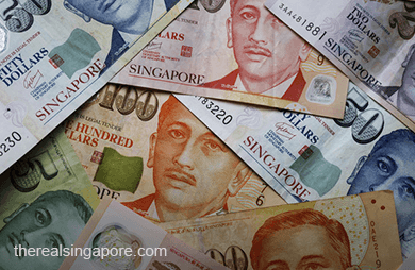
SINGAPORE (Oct 6): The Monetary Authority of Singapore is unlikely to adopt a negative slope for the Singapore Dollar nominal effective exchange rate (NEER) during the October review, after adopting a neutral slope in April.
Instead, the Bank of Singapore’s FX Research believes there is a 70% likelihood that MAS leave its policy unchanged.
In a note on Thursday, Bank of Singapore’s Senior Currency Strategist, Sim Moh Siong, noted that a negative slope would lead to a depreciation of the currency and “could be perceived as going against the spirit of G20 commitment to avoid competitive devaluation”.
Furthermore, MAS has also turned more positive on its 2017 core inflation outlook, raising it to 2%, as commodity prices continue to stabilise and rebound. These make it “unlikely that MAS will re-centre the policy band weaker”, says Sim.
On the other hand, Sim cautions that there is still a 30% probability that MAS will continue to adopt a policy of foreign exchange easing, due to the weakening labour market and slow economic growth. Having said that, Sim believes MAS will choose to re-centre the midpoint of the SGD NEER downwards, creating a slower growth, instead of imposing a negative slope that leads to depreciation.
To be sure, the SGD NEER has already weakened within the current band, on the back of the lacklustre property market and DPM Tharman’s recent comments about the city state’s poor growth number, and Sim expects the trend to continue with the SGD NEER to trade below 1% of the mid point, from the current 0.5% below mid.
So where should investors hop in on the forex bandwagon?
“We would recommend using any bounce in the SGD NEER - on a no change policy decision or otherwise - to add to short SGD exposure as part of relative value plays,” said Sim, adding that the ample SGD liquidity and lower short end yields makes the local currency “an attractive funder” against the Indian Rupee and the Indonesian Rupiah.
Against the USD, Sim expects the SGD to continue to trade within its one year range of 1.33 to 1.44, but added that the currency pair’s spot prices could see higher volatility given the risks from the US elections, the possible December FED hike, and the potential triggering of Article 50 by UK in early 2017.